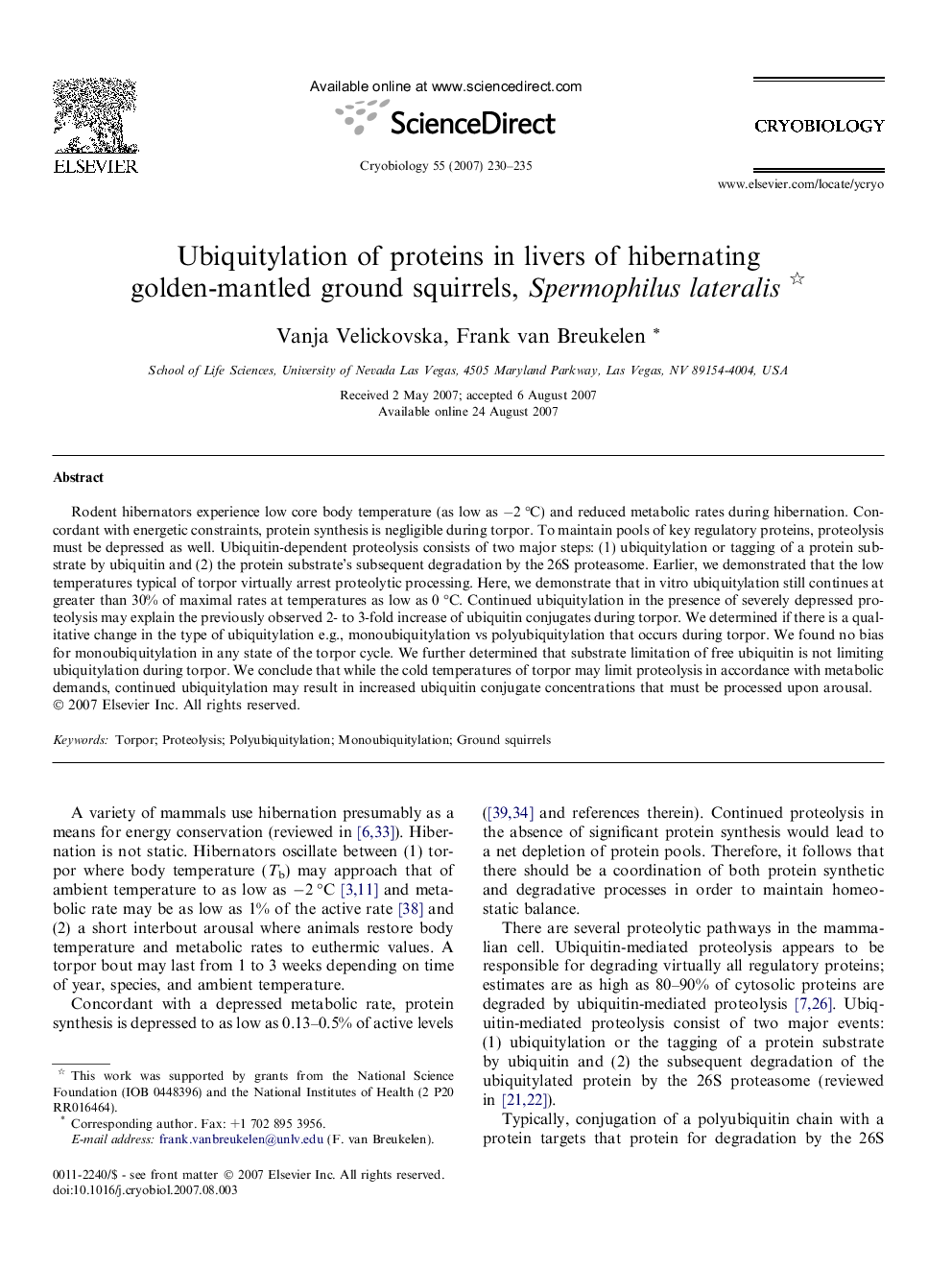| Article ID | Journal | Published Year | Pages | File Type |
|---|---|---|---|---|
| 2169328 | Cryobiology | 2007 | 6 Pages |
Rodent hibernators experience low core body temperature (as low as −2 °C) and reduced metabolic rates during hibernation. Concordant with energetic constraints, protein synthesis is negligible during torpor. To maintain pools of key regulatory proteins, proteolysis must be depressed as well. Ubiquitin-dependent proteolysis consists of two major steps: (1) ubiquitylation or tagging of a protein substrate by ubiquitin and (2) the protein substrate’s subsequent degradation by the 26S proteasome. Earlier, we demonstrated that the low temperatures typical of torpor virtually arrest proteolytic processing. Here, we demonstrate that in vitro ubiquitylation still continues at greater than 30% of maximal rates at temperatures as low as 0 °C. Continued ubiquitylation in the presence of severely depressed proteolysis may explain the previously observed 2- to 3-fold increase of ubiquitin conjugates during torpor. We determined if there is a qualitative change in the type of ubiquitylation e.g., monoubiquitylation vs polyubiquitylation that occurs during torpor. We found no bias for monoubiquitylation in any state of the torpor cycle. We further determined that substrate limitation of free ubiquitin is not limiting ubiquitylation during torpor. We conclude that while the cold temperatures of torpor may limit proteolysis in accordance with metabolic demands, continued ubiquitylation may result in increased ubiquitin conjugate concentrations that must be processed upon arousal.
